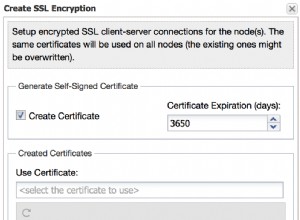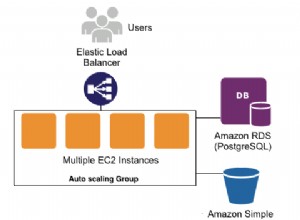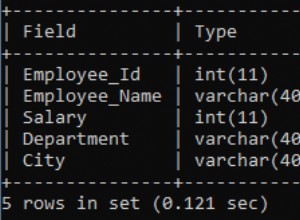Una funzione di tabella pipeline sembra più adatta a ciò che desideri, soprattutto se tutto ciò che stai facendo è recuperare i dati. Vedi http://www.oracle-base.com/ articoli/misc/pipelined-table-functions.php
Quello che fai è creare un tipo per la tua riga di output. Quindi nel tuo caso creeresti un oggetto come
CREATE TYPE get_data_faster_row AS OBJECT(
seq NUMBER(15,2),
value VARCHAR2(10),
item VARCHAR2(10)
);
Quindi crea un tipo di tabella che è una tabella composta dal tuo tipo di riga sopra
CREATE TYPE get_data_faster_data IS TABLE OF get_data_faster_row;
Quindi crea la tua funzione di tabella che restituisce i dati in modo pipeline. Pipelined in Oracle è un po' come un rendimento in .net (non sono sicuro che tu ne abbia familiarità). Trovi tutte le righe che desideri e le "convoglia" una alla volta in un ciclo. Quando la tua funzione completa, la tabella restituita è composta da tutte le righe che hai inviato tramite pipe.
CREATE FUNCTION Get_Data_Faster(params) RETURN get_data_faster_data PIPELINED AS
BEGIN
-- Iterate through your parameters
--Iterate through the results of the select using
-- the current parameters. You'll probably need a
-- cursor for this
PIPE ROW(get_data_faster_row(seq, value, item));
LOOP;
LOOP;
END;
EDIT:Seguendo il commento di Alex qui sotto, hai bisogno di qualcosa del genere. Non sono stato in grado di testarlo, ma dovrebbe iniziare:
CREATE FUNCTION Get_Data_Faster(in_seq_numbers IN seq_numbers_array, in_values IN text_array, in_items IN text_array, list IN VARCHAR2) RETURN get_data_faster_data PIPELINED AS
TYPE r_cursor IS REF CURSOR;
query_results r_cursor;
results_out get_data_faster_row := get_data_faster_row(NULL, NULL, NULL);
query_str VARCHAR2(4000);
seq_number NUMBER;
the_value VARCHAR2(10);
the_item VARCHAR2(10);
BEGIN
FOR i IN 1..in_seq_number.COUNT
LOOP
seq_number := in_seq_numbers(i);
the_value := trim(in_values(i));
the_item := trim(in_items(i));
query_str := 'SELECT distinct '||seq_number||' as seq, value, item
FROM my_table ai';
query_str := query_str || '
WHERE ai.value = '''||the_value||''' AND ai.item = '''||the_item||'''
AND ai.param = ''BOOK''
AND ai.prod in (' || list || ');
OPEN query_results FOR query_str;
LOOP
FETCH query_results INTO
results_out.seq,
results_out.value,
results_out.item;
EXIT WHEN query_results%NOTFOUND;
PIPE ROW(results_out);
END LOOP;
CLOSE query_results;
END LOOP;
END;
Informazioni extra dal commento di Alex qui sotto utili per la risposta:




